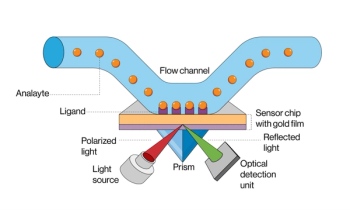
Fiber Optics and Neural Networks Transform Vehicle Sensing and Road Safety
A cutting-edge fiber optic sensing system, developed by researchers at Tongji University, leverages neural networks to classify vehicles with unprecedented accuracy. The system’s innovative design uses spectroscopic and optical sensor technologies to provide critical data for road maintenance and traffic management.
Innovative Sensing System
In a new development for transportation infrastructure, researchers Yi Hu, Hongwei Zhang, Yuan Gao, and Qun Yang of The Key Laboratory of Road and Traffic Engineering at Tongji University in Shanghai, China have developed a novel fiber optic sensing system for vehicle classification. Published in the KSCE Journal of Civil Engineering, this original study addresses longstanding challenges in obtaining precise vehicle counting and classification data, which is essential for effective long-term road maintenance and traffic management. Fiber optic-based sensors have shown great promise in vehicular monitoring for several important parameters (1–4).
Overcoming Traditional Limitations
Traditionally, vehicle monitoring sensors have been categorized as either intrusive—disrupting traffic during installation—or non-intrusive but less reliable due to environmental noise influences. This new system bypasses these issues by using a surface adhesion method that allows for easy deployment without interrupting traffic flow. Based on the principle of optical microbending loss, the system takes advantage of the optical fiber’s response to mechanical stress: as a vehicle passes, the fiber bends and its visible light intensity diminishes in a precisely measurable way. These changes in light intensity provide highly reliable indicators of vehicle presence and specific vehicle identification characteristics (1).
Advanced Spectroscopic and Optical Sensors
At the heart of the system lies an advanced spectroscopic and optical sensor setup. A stable laser visible light source emits a continuous beam that passes through a grid-like deformer. This deformer, integrated with adjustable upper and lower steel plates separated by rubber strips, ensures the sensor can be fine-tuned for sensitivity. When a vehicle applies pressure, the optical fiber experiences microbending, causing light attenuation that is detected by a photodetector. The converted electrical signals are captured by a data acquisition card and processed by an industrial computer with multiple data analysis algorithms. This detailed optical analysis not only measures intensity modulation but also provides real-time insights into vehicle dynamics—a key element in ensuring high accuracy for vehicle classification (1).
Enhanced Data Processing Techniques
To extract meaningful features from the raw optical data, the research team employed advanced data processing techniques. Moving average smoothing, an enhanced valley detection algorithm, speed calculation, and axle spacing analysis are used to distill the sensor signals into valuable vehicle parameter data. In addition, a roadside camera records test events, allowing for visual verification and ensuring the robustness of the sensor readings. This dual approach of optical and visual data validation significantly bolsters the reliability of the system. These data can be further combined for more detailed analysis (1).
Neural Networks: The Engine Behind Accurate Classification
One of the most interesting aspects of the study is the integration of artificial neural networks (ANNs) into the sensing framework. A three-layer neural network model was developed with 13 input nodes capturing various vehicle features and a hidden layer consisting of 27 neurons. Techniques such as Xavier initialization and the Adam optimizer with mini-batch gradient descent were used to fine-tune the model. The neural network’s design enables it to distinguish between similar vehicle types, notably improving the differentiation between two-axle passenger cars and trucks. The result is a remarkable overall recognition rate of 99.4 percent for eight distinct vehicle categories (1).
Broader Implications for Road Maintenance and Traffic Management
The research, as detailed in the original text, provides significant insights into how spectroscopic and optical sensors can be enhanced with neural network-based data processing to create robust vehicle classification systems. The combination of these advanced technologies offers potential applications far beyond simple vehicle counting. Reliable traffic data is indispensable for effective road maintenance, real-time overload detection, non-stop toll collection, and even the design of future traffic control strategies. Moreover, the system’s non-intrusive installation and cost-effective design make it a promising candidate for large-scale deployment on multi-lane roads, potentially improving the safety and efficiency of transportation networks (1).
Research Team and Institutional Collaborations
This research not only sets a new benchmark in vehicle classification accuracy but also expands the possibilities for future applications of fiber optic sensing technology in transportation infrastructure management. The integration of advanced spectroscopic sensors with neural network models establishes a new toolset in vehicle classification technology. This innovative approach, detailed in the original study, offers a robust, precise, and scalable solution for modern traffic management and road maintenance challenges, promising safer roads and more efficient traffic systems in the years to come.
References
(1) Hu, Y.; Zhang, H.; Gao, Y.; Yang, Q. Neural Networks-Based Convenient Fiber Optic Sensing System for Vehicle Classification. KSCE J. Civ. Eng. 2025, 29 (4), 100043. DOI:
(2) Arumugam, G.; Packianathan, R.; Malaiarasan, A.; Natarajan, S. K. The Role of Sensors in Shaping Future Transportation Systems. In Driving Green Transportation System Through Artificial Intelligence and Automation; Khang, A., Ed.; Lecture Notes in Intelligent Transportation and Infrastructure; Springer: Cham, 2025. DOI:
(3) Raghavan, A.; Kiesel, P.; Sommer, L. W.; Schwartz, J.; Lochbaum, A.; Hegyi, A.; Schuh, A.; Arakaki, K.; Saha, B.; Ganguli, A.; Kim, K. H. Embedded Fiber-Optic Sensing for Accurate Internal Monitoring of Cell State in Advanced Battery Management Systems Part 1: Cell Embedding Method and Performance. J. Power Sources 2017, 341, 466–473. DOI:
(4) Karuppasamy, S. S.; Jeyaprakash, N.; Yang, C. H. The Sensors in Future Vehicles. In The Future of Road Transportation; CRC Press: 2023; pp 261–283.
Newsletter
Get essential updates on the latest spectroscopy technologies, regulatory standards, and best practices—subscribe today to Spectroscopy.




